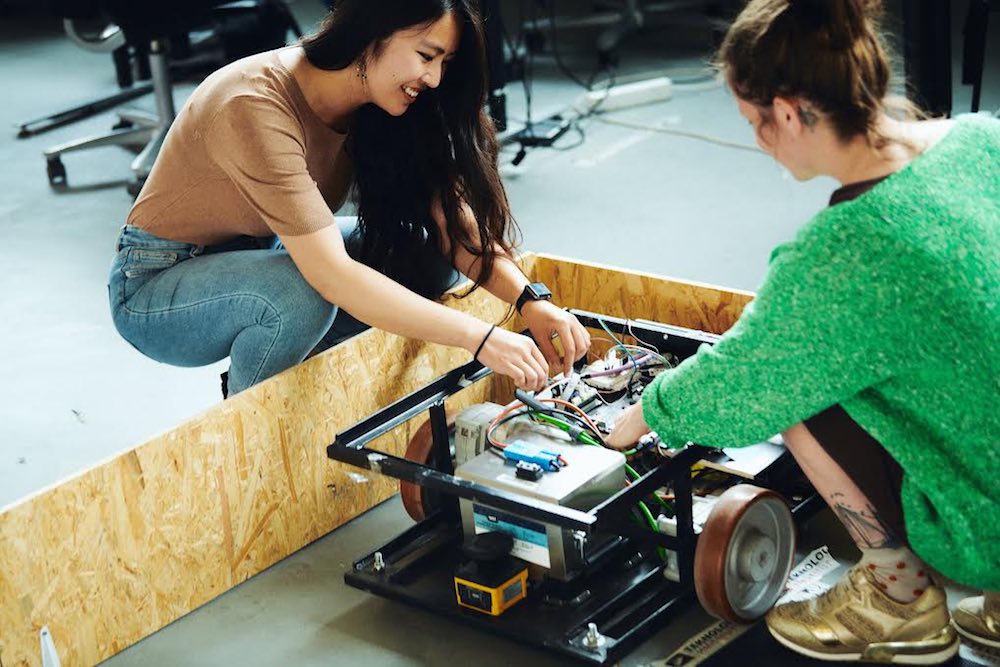|
Listen to this article  |

Denmark has long been home to one of the strongest robotics clusters worldwide. And, according to the Odense Robotics Insight Report 2022 (PDF), Denmark’s robotics industry grew 12% in 2021.
Denmark’s robotics, automation and drone industry generated EUR 2.8 billion (DKK 21.1 billion) in turnover in 2021, including EUR 1.5 billion (DKK 11 billion) in exports. According to the report, more than EUR 900+ million (DKK 6.7 billion) has been invested in robotics companies in Denmark since 2015. And more than 400 robotic companies in Denmark employ a total of 14,500 people.
“Denmark continues to rank amongst the world’s leading robot nations, delivering a strong 12% growth last year and even higher rates in segments such as collaborative and mobile robots,” said Mikkel Christoffersen, CEO, Odense Robotics. “Global labour shortages at end users are fuelling demand for automated solutions and extending deployment of Danish robotic and drone technologies to new sectors such as logistics, retail, construction, healthcare and energy.”
According to the report, the Danish robotics industry has a positive outlook on 2022 and through to 2025, where turnover forecasts reach EUR 5 billion (DKK 37.2 billion). Companies experiencing strong growth said increased demand for automated solutions is fuelled by several key megatrends:
- Labor shortages
- Increased need for on efficiency improvements
- Disruptions to supply chain
- A growing focus on green transition
- Companies experienced repeated business from customers extending their use of technologies after seeing the impact
Two of the world’s most prominent robotics companies are based in Denmark: Mobile Industrial Robots (MiR) and Universal Robots (UR). These two companies, according to the report, experienced financial turnover increases of more 40% in 2021.
UR increased sales 41% in 2021 to a record $311 million. That accounted for nearly 83% of all revenue for Teradyne’s industrial automation group. UR generated $97 million in revenue in Q4, its largest quarterly revenue number ever. That marks a 22% increase on Q4 2020 and 28% up on Q4 2019.
“Universal Robots has had a great year,” said UR president Kim Polvsen. ”In a company like ours, which manufactures sophisticated hardware to high quality standards, this sort of growth requires tremendous commitment from all involved. Our production team in Denmark has broken internal records for the number of cobots built, producing 400 cobots in a single week in Q4. Our supply chain experts have worked hard to keep our business running smoothly despite global supply challenges.”
MiR grew sales 42% in 2021 to $64 million. Its best seller was the MiR250, but its higher payload MiR600 and MiR1350 autonomous mobile robots also sold well. MiR said it sold nearly 300 AMRs in December 2021, which set a record for a single month.
Despite the growth, challenges still persist. Eighty-five percent of Danish robotics companies surveyed said the biggest adoption barrier is the lack of understanding about the benefit of automation. The second-largest (82%) growth barrier is a lack of R&D resources, while a lack of qualified employees and supply chain issues was the third-largest (79%) challenge.
“It’s important that even more sectors realize just how big a contribution robotic technologies, drones and flexible automation can make,” said Casper Hansen, CEO of Technicon, and vice chairman of Odense Robotics. “They can be a big part of the solution to global challenges such as labor shortages. They can improve work conditions. Drive efficiencies. Even strengthen your brand. But we need even more sectors to realise this before we can see the full benefits. It’s about increasing understanding about the advantages of new technologies and making them more and more easy to deploy.”
Credit: Source link


Comments are closed.